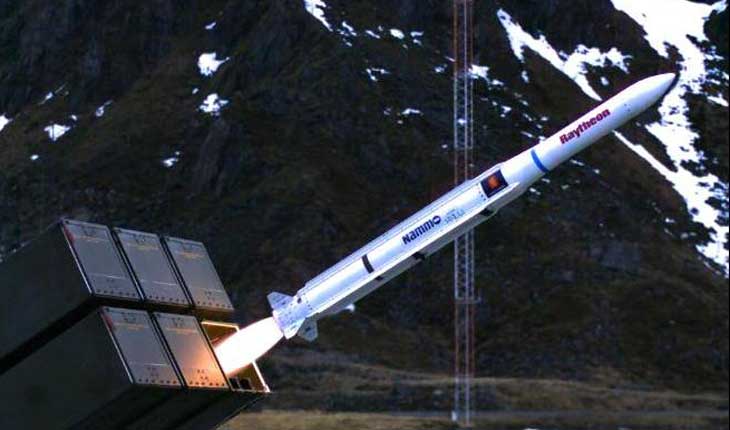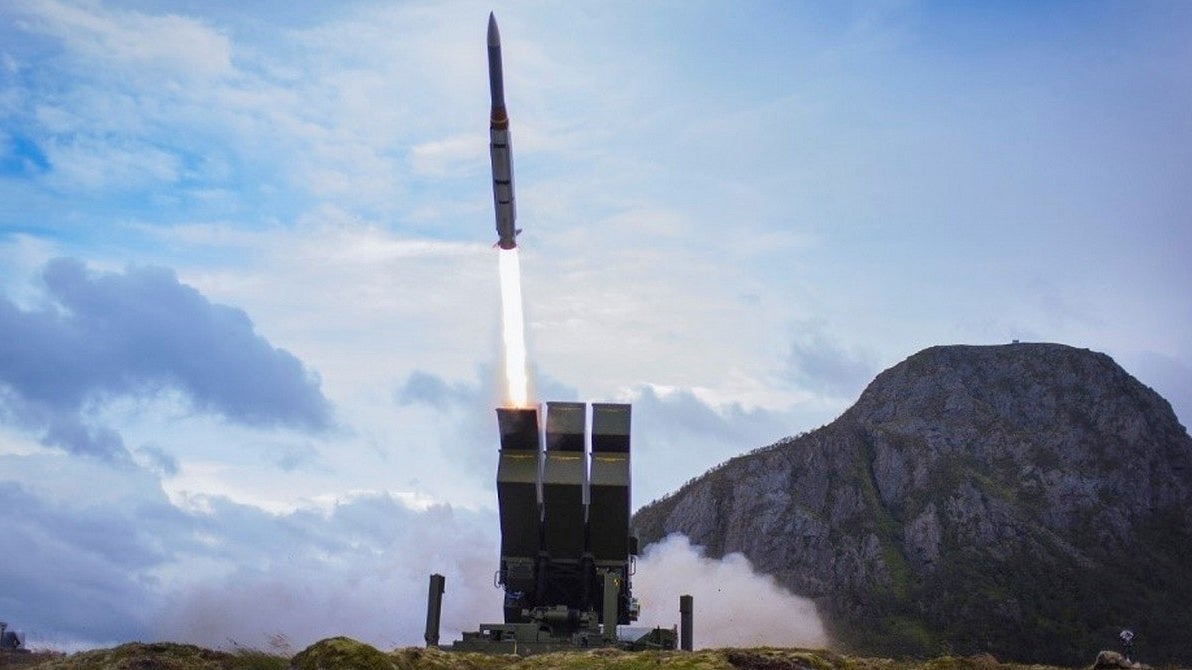Qatar is the first country to officially purchase the AMRAAM-ER surface-to-air missile that is designed to work with Raytheon and Norway’s Kongsberg Defense’s National Advanced Surface-to-Air Missile System, better known as NASAMS. The purchase is part of a larger deal worth $2.2B that will also include components of the latest iteration of the MIM-104 Patriot air defense systems. NASAMS can be paired with Patriot as part of a larger, multi-layer, highly-integrated air defense system (IADS).
A Raytheon press release reads as follows:
Raytheon Company (NYSE: RTN) announced it was awarded two direct commercial sales contracts by the State of Qatar for additional integrated air and missile defense capability. The contracts, worth approximately $2.2 billion, include the National Advanced Surface-to-Air Missile System, final certification of the AMRAAM®-Extended Range missile, and an unspecified quantity of additional Patriot™ fire units. These awards are part of a larger agreement being pursued by the Qataris with the U.S. government. The combined value is expected to total up to $3B.
“Raytheon’s integrated air and missile defense capabilities provide a combat-proven, layered approach that protects citizens, militaries and infrastructure from a broad spectrum of threats,” said Ralph Acaba, President of Raytheon Integrated Defense Systems.
Qatar is the first country to procure AMRAAM-ER, the surface-to-air extended-range variant of the combat-proven AMRAAM air-to-air-missile. Qatar also becomes the 11th country to procure NASAMS, a medium-range air-defense solution manufactured by Raytheon and Kongsberg Defence & Aerospace AS. NASAMS uses the Raytheon Sentinel radar, and fires multiple interceptors, including AMRAAM-ER.
The combat-proven Patriot™ system is the backbone of air and missile defense for 16 nations.

AMRAAM-ER leverages the forward warhead and guidance section of the AIM-120C7 air-to-air missile and the motor and control section from the RIM-162 Evolved Sea Sparrow Missile (ESSM). RIM-162 is a mainstay medium-range air defense missile for U.S. Navy destroyers, cruisers, aircraft carriers, and amphibious assault ships. It’s also widely deployed on surface combatants in service with NATO members and other U.S. allies. You can read all about ESSM and its new Block II capabilities in this past piece of ours.
The primary missile used by NASAMS is the AIM-120 AMRAAM air-to-air missile—a missile that was designed to be launched at altitude and with the benefit of the speed of its launching aircraft. It’s thought that the current AIM-120 equipped NASAMS has a range of around 20 miles and a maximum ceiling of about 50,000 feet. Leveraging the ESSM’s motor and control section—a system that was designed from scratch to be fired from the surface of the earth—reportedly boosted NASAMS’ engagement range about at 50 percent and increased its ceiling by 70 percent. Keep in mind that these figures are likely conservative if not deliberately discounted. In addition, the missile should have better energy management and a greater ability to take down low-flying, fast-flying, and hard maneuvering targets.
It’s also worth noting, that as far as we know, the newest variant of the AIM-120, the AIM-120D, which features substantially more range than the AIM-120C7, has not been adapted for NASAMS use.

With the latest Patriot’s ability to swat down short-range ballistic missiles during their terminal stage of flight and traditional air-breathing threats over longer ranges, this enhanced version of NASAMS will complement Patriot nicely, acting as a second layer of defense in high-risk target areas. Qatar has a variety of short-range point defense systems to protect individual targets as a last line of defense. All of this is in addition to Qatar’s fighter aircraft fleet, which will soon include the world’s most advanced F-15 Eagles.
Currently, NASAMS is used right here in the United States for the country’s most critical air defense mission. Most Americans don’t realize it, but this SAM system is the primary ground-based kinetic component of the integrated air defense system that protects the Capital Region, along with AN/TWQ-1 Avenger short-range air defense systems that are positioned in a few key locations. NASAMS launchers are located near very high-profile targets around the greater Washington, D.C. metro area, but their ranges overlap, creating a large coverage area that can put many types of aerial threats at risk. F-16C/Ds based at Andrews AFB and MH-65 Coast Guard helicopters based at Reagan International Airport make up the aerial component of the anti-air umbrella over the nation’s capital. You can read all about NASAMS’ role in protecting Washington, D.C. in this past feature of mine and about the Capital’s other defenses here.

Upgrading to the AMRAAM-ER for the 10 countries that already use NASAMS is highly logical as this missile can make better use of the advanced and far-reaching sensor networks that are part of, or feed data to NASAMS. In addition, the existing launchers can readily accommodate the missile, as well as others, such as the AIM-9X Sidewinder.
The somewhat limited range of the standard ground-launched AIM-120 wasn’t a huge plus for this system. Adapting an air-to-air missile for ground-to-air purposes never is ideal. With AMRAAM-ER available, NASAMS moves deeper into the medium-range air-defense class. With this in mind, sales to entirely new users are also now far more likely than in recent memory. For countries that operate the AIM-120 and the ESSM, which many U.S. allies do, there will probably be a minimal increase when it comes to secondary costs of introducing and sustaining a new missile like AMRAAM-ER.

On a side note, it will be interesting to see if AMRAAM-ER gets evaluated for air-to-air adaptation. ESSM was not built to handle the rigors of flight and especially not on a hard-turning and fast-flying fighter aircraft, so it is unclear what it would take to make it capable of doing so. Still, this has been done on multiple occasions over the years. As an example, Israel is working to adapt its innovative Stunner missile for air-to-air use.
Currently, the USAF and the Navy are rapidly pursuing multiple new long-range air-to-air solutions to eventually replace the AIM-120 as America’s go-to beyond-visual-range air-to-air missile. If AMRAAM-ER offers such a substantial performance in its ground-launched form, it would be interesting to know what it could do if it was air-launched at high-altitude and transonic or even supersonic speed. It could be a somewhat off-the-shelf option for fighters that carry their missiles externally or for stealthy fighters while not operating in low-observable configuration. It could represent increased value for operations where those fighters would work as arsenal planes for stealth fighters with limited magazine depth that are operating deeper into enemy airspace.
Now that NASAMS has a more powerful and far better-optimized missile, it will be interesting to see if it enjoys anywhere near the same success as the latest Patriot missile systems have as of late. But regardless of its export potential, there’s a very good chance that AMRAAM-ER will be tasked with protecting America’s seat of power in the not so distant future.
Contact the author: Tyler@thedrive.com
